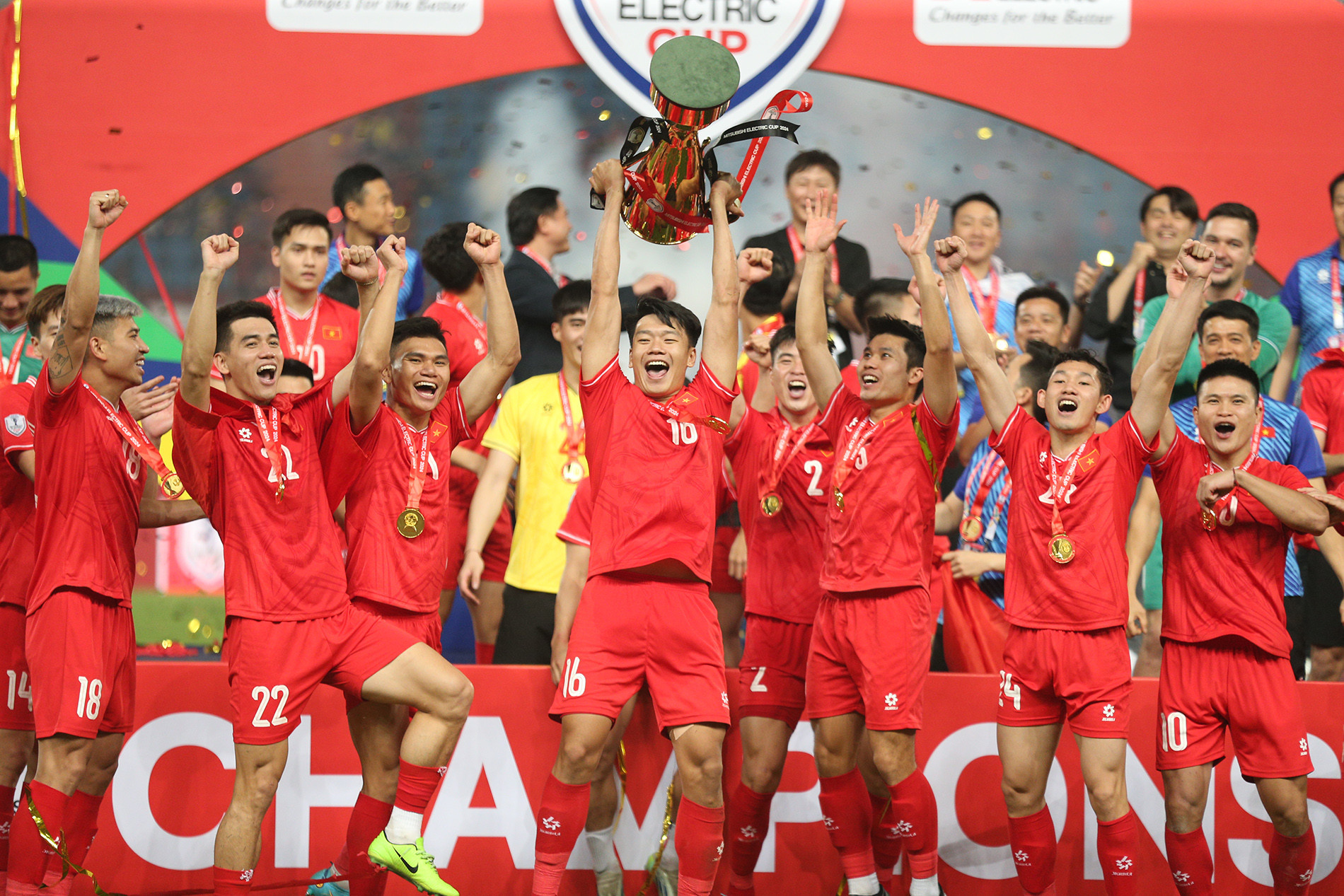
Head coach Kim Sang Sik recently expressed his ambition to lead Vietnam's national football team to the 2030 FIFA World Cup. However, with the foundation limited to an ASEAN Cup victory, achieving this dream will require much more than regional success.
From ASEAN Cup glory to World Cup aspirations
After guiding Vietnam to victory in the 2024 ASEAN Cup, head coach Kim Sang Sik returned to South Korea, attracting significant attention from the media in his home country.
In a recent interview, the 49-year-old coach reflected on his journey and voiced his ambition to secure a spot for Vietnam at the 2030 FIFA World Cup.
“We dream of participating in the 2030 World Cup,” said Kim Sang Sik. “But to make this dream a reality, we need to train hard and give it our all.”
Vietnam’s success in the ASEAN Cup rekindled the country's hopes of appearing on football's biggest stage.
However, the dream of reaching the World Cup predates Kim Sang Sik’s tenure. Under coach Park Hang Seo, Vietnam achieved remarkable milestones that inspired similar aspirations.
To further this vision, the Vietnam Football Federation (VFF) previously appointed Philippe Troussier, a coach with extensive World Cup experience, especially as FIFA expanded the tournament to include 48 teams starting in 2026.
This underscores that Vietnam’s desire to qualify for the World Cup is neither new nor rhetorical. Concrete steps have been taken to transform this aspiration into actionable goals.
Bridging the gap: Challenges on the road to the World Cup
On the surface, Vietnam’s goal of securing a 2030 World Cup berth may not seem unattainable. In recent years, the national team has consistently approached the top 10 teams in Asia.
However, beneath this surface lies a host of challenges. Vietnam's football system still faces significant issues, from youth development to the structure and quality of the domestic league.
Since winning the ASEAN Cup (formerly the AFF Cup) for the first time in 2008, little has changed in terms of substantial development in the domestic league’s competitiveness or the operational efficiency of its clubs.
While Vietnam’s players have become more professional and their achievements more consistent, the foundation necessary for a World Cup dream remains insufficient.
The intermittent nature of Vietnam’s victories in regional tournaments highlights a lack of consistency and stability.
To realize this ambition, systemic changes must occur. The recent ASEAN Cup victory should be seen as a small spark reigniting the World Cup dream. Achieving that dream will require comprehensive reforms and long-term investment in both player development and football infrastructure.
Duy Nguyen